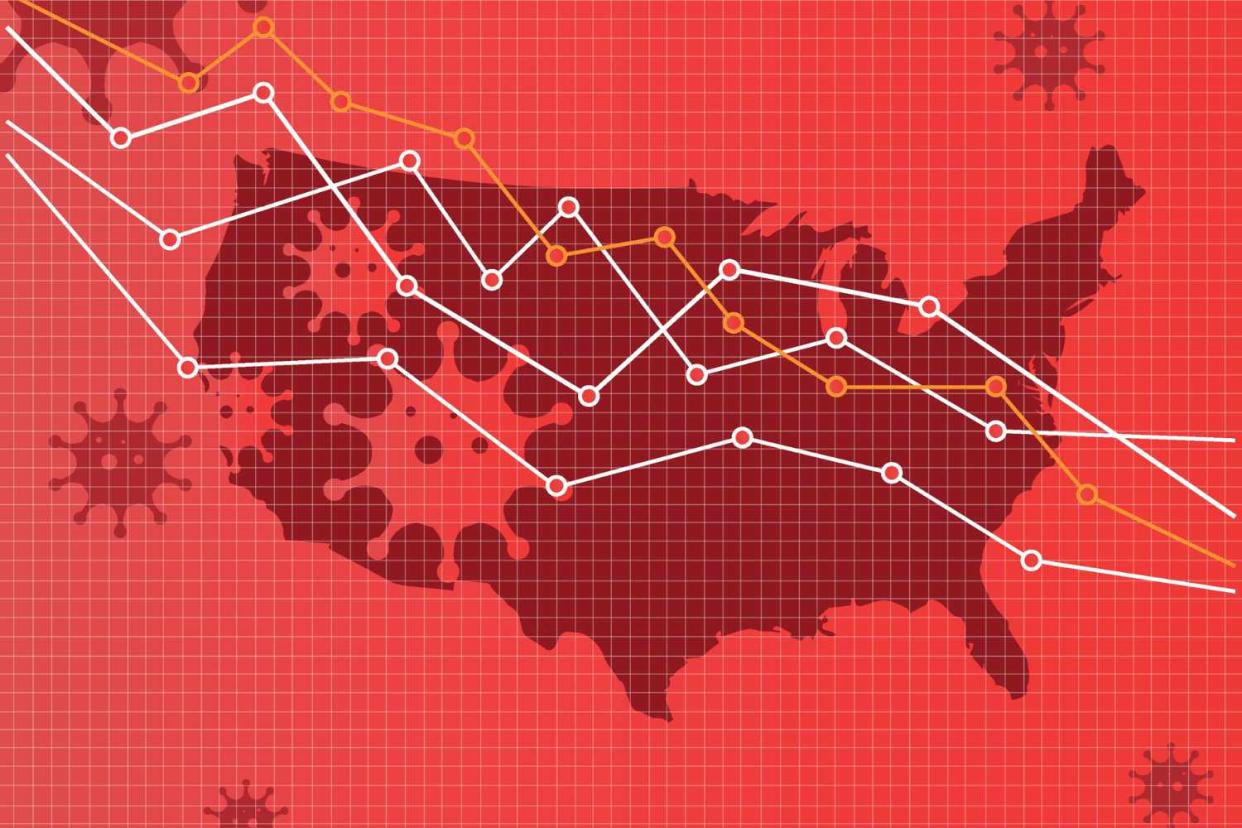What the End of the COVID-19 Public Health Emergency Means For You

Eda Hoyman / Getty Images
- Oops!Something went wrong.Please try again later.
Fact checked by Nick Blackmer
Today marks the end of the COVID-19 Public Health Emergency in America, according to the White House.
That doesn’t put an end to the virus, of course.
“The end of the national emergency around COVID-19 means that there will be certain bureaucratic changes,” Leana Wen, MD, an emergency room physician and professor of health policy and management at the George Washington University in Washington DC, told Verywell. “It does not mean that COVID-19 the disease is somehow over or no longer a threat. Rather, it has become clear that this coronavirus will be with us for the foreseeable future, and is an infectious disease that must be prevented, treated, and managed, like other serious conditions.”
For individuals, the most important thing to know is that vaccines, treatments, and tests may not be free moving forward. The Public Health Emergency puts a coda on many of the measures put in place when the virus was determined to be a global threat in early 2020, including federal funding for prevention and treatment tools.
COVID vaccines will remain available for free for now, but once the supply purchased by the government runs out, you may have to get the vaccine through a provider authorized by your insurer. If you don’t have insurance, federally qualified health centers will provide vaccines of all kinds to anyone, free of charge.
COVID tests are no longer required to be covered by insurance. If your employer offers a flexible spending account (FSA) or a health savings account (HSA), you can use that money to buy tests. Expect to pay about $30 per test kit, which includes two tests. Some states may still provide free tests to libraries and community health centers. You can check the CDC’s free test locator to see if there are locations in your area.
COVID treatments to stave off severe illness, like Paxlovid, will remain freely available while supplies already purchased by the government last. After that, the price will be determined by the medication manufacturer and your health insurance coverage. Assistance programs may help cover the cost if you’re uninsured.
The end of the Public Health Emergency also means fewer data sources to help you determine if COVID cases are rising in your community. The CDC’s authority to collect and use certain data has come to an end, but the agency will continue to monitor and report information like:
Vaccination rates (updated monthly instead weekly)
Positive COVID test data from 450 labs around the country
Emergency room admissions for positive COVID cases
Weekly hospital admissions related to COVID
COVID deaths
Related:COVID by the Numbers: April 2023
The CDC will also monitor wastewater testing, since the COVID-19 virus is shed in human waste and can be an indicator of rising cases and new variants.
The good news about the end of the Public Health Emergency means COVID-19 has become just one more relatively normal illness to be aware of and try to prevent, Amesh Adalja, MD, senior scholar at the Center for Health Security at the Johns Hopkins Mailman School of Public Health in Baltimore, told Verywell.
Adalja emphasizes the advances scientists have made in the last three years mean the COVID landscape ahead is far from bleak. For instance, Paxlovid is far more effective at treating COVID than Tamiflu is at treating the flu.
Related:The First Test for COVID and Flu Is Here. But It's Tricky to Get One
But infectious disease specialists are concerned that people who hear about the end of the public health emergency, which is a bureaucratic and not medical finale, will become complacent. Niket Sonpal, MD, an assistant professor of medicine at Touro College of Osteopathic Medicine in New York City, told Verywell that people shouldn’t ditch their masks just yet.
“People will continue to get COVID-19 and there will always be the potential for new strains,” he said. “We could still have COVID outbreaks, and we will still have flu and RSV in the fall. Masks will help protect you from getting sick, especially in the winter months when respiratory illnesses like flu and COVID can be at their highest levels.”
One key thing that doesn’t change with the end of the Public Health Emergency is the chance of severe disease among people considered high-risk for COVID.
“COVID-19 remains a risk, particularly for those who are at higher risk. This includes older Americans, people who are immune compromised, and those who are living with disabilities,” said Nirav Shah, MD, deputy principal director of the CDC, during a call with reporters late last week.
This means isolating yourself from others is still important if you experience COVID symptoms, and especially important if you test positive. For high-risk individuals, in particular, this means contacting a healthcare provider and seeking treatment as soon as you think you may be ill.
The information in this article is current as of the date listed, which means newer information may be available when you read this. For the most recent updates on COVID-19, visit our coronavirus news page.

